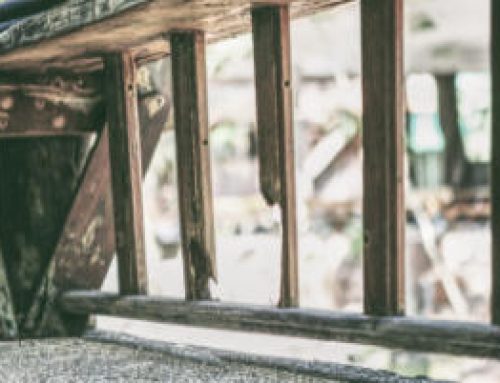One of the top materials for cladding a home is stucco. It is often chosen for its long life—lasting up to 50 years with little maintenance if installed and cared for properly. In addition, damage can usually be fixed easily and without a huge expense. Stucco doesn’t come without its share of problems, however, as discovered by Matthew Furlong of Först Consulting Group. In a construction defect inspection of a Virginia home construction project, a number of stucco failures were identified.
Stucco Failure 1: Improper Moisture Barrier
The stucco contractor failed to use the correct and code-approved Weather-Resistive Barrier behind the stucco when installing it. What should have been used are two layers of Grade-D Asphalt Saturated Kraft (ASK) paper—a minimum requirement by the Virginia Uniform Statewide Building Code (USBC).
The Grade-D ASK paper has a higher permeability rating as compared to roofing felt paper. It is more “breathable,” which allows the wall to dry faster when it becomes wet—and it will. The felt paper can increase moisture absorption and slow drying intervals, leading to moisture problems, mold or mildew.
The higher-durability Grade-D ASK paper resists tearing, whereas the roofing felt is brittle, and can rip and tear easily when applied in outside and inside corners.
The best practice for stucco is to install a rain screen system, which offers superior drainage efficiency, durability, and water resistance when properly detailed.
Stucco Failure 2: Missing Weep Screeds
An approved weep screed was not installed at the bottom of the wall termination in all locations. Instead, the stucco contractor installed a casing bead which is designed and intended for use as a universal plaster stop around doors and windows.
A weep screed is a piece of metal flashing set at the bottom of your home’s exterior walls. It is intended to wick out moisture located behind walls and provide an outlet for water to drain out. Casing bead is not an approved weep screed, and it lacks the required 3 ½” vertical flashing nail flange required by the USBC and the Stucco Manufacturer’s Association.
Stucco Failure 3: Incorrect Ground Clearance
Building codes require a specific distance between the ground level and the bottom of the stucco, and in this inspection, the stucco was found to terminate below grade. Back fill had buried the bottom of the wall stucco beneath the dirt.
Since stucco is a reservoir cladding and requires a drainage plan with adequate clearances at its termination points, the failure of correct clearance can become a primary cause of water infiltration and wood decay.
Stucco Failure 4: Water Infiltration
The homeowners had reported numerous water infiltration events over a five-month period, which were brought to the attention of the contractor. Disregarding their concerns, the contractor proceeded to install thermal insulation.
It was discovered in the defect inspection that deficient window installations, inadequate window flashing details, and inadequate stucco installation details were the cause. Several areas below and next to the wall openings that were excessively wet. The wall sheathing behind the Spray Polyurethane Foam (SPF) was also wet. Using a moisture meter, Furlong confirmed a 40% to 100% moisture content in the wall sheathing below and next to the wall openings.
When SPF is installed over wet sheathing, the wall cavities are unlikely to adequately dry. Due to the recurring water infiltration events and the inability to dry, Furlong recommended that certain portions of the SPF be immediately removed to facilitate drying.
Suspect a Stucco Failure? Contact Först Consulting Group
When you’re constructing a new home or a home addition, you vet and hire a stucco contractor, and trust that their work will be building code compliant. However, as you see, stucco failures can happen. To ensure your construction is done correctly, hire Först Consulting Group to perform a construction defect inspection.
If you have questions about your own suspected stucco failures, or to schedule your own construction defect investigation, contact Matthew Furlong at Först Consulting Group.


